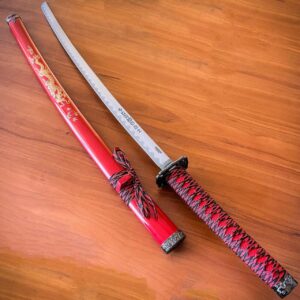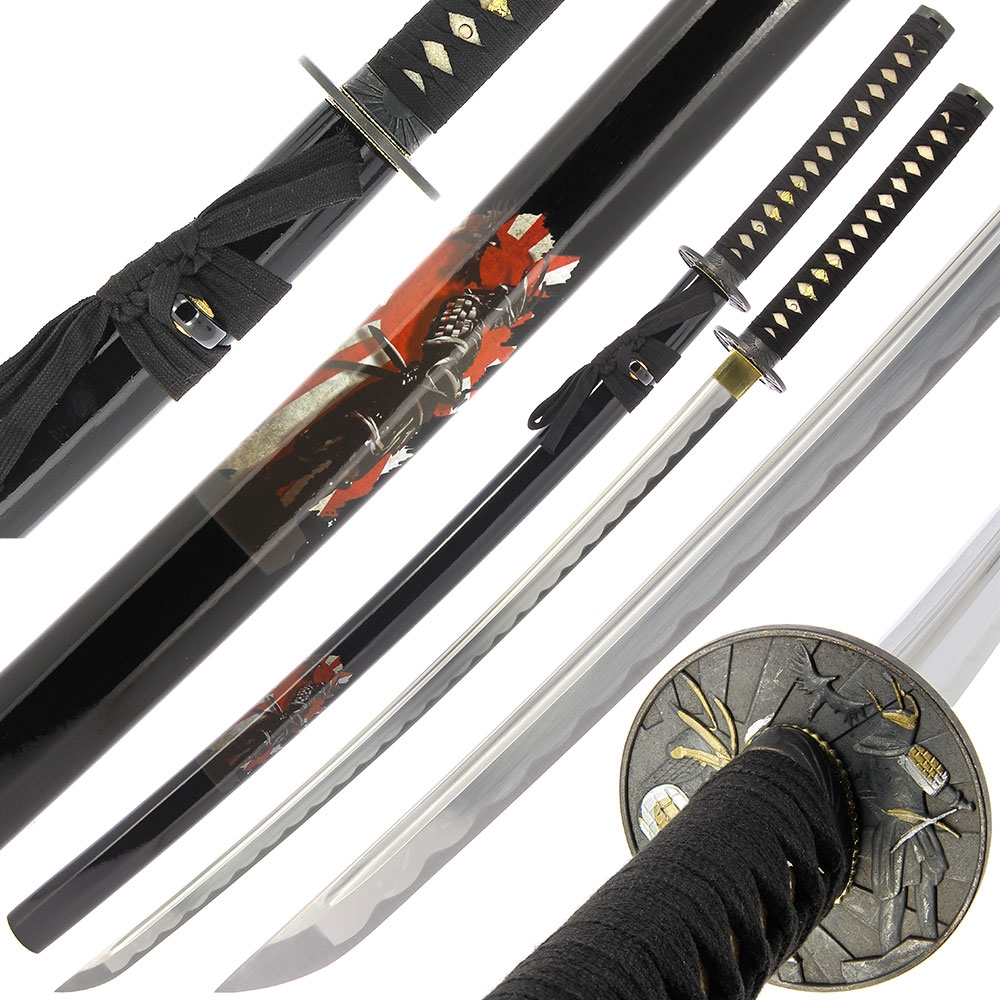A katana is a traditional Japanese sword that has gained iconic status not only for its sharpness and cutting ability but also for its cultural significance. The katana is a type of longsword with a distinctive appearance, characterized by its curved, slender blade and circular or squared guard. Understanding the different parts of a katana is essential for appreciating its craftsmanship and functionality.
Blade (Katana):
The most prominent part of a katana is its blade, known as the katana itself. Traditionally, it is a single-edged, curved blade with a sharp cutting edge on one side and a flat back on the other. The curve of the blade is not just for aesthetics; it allows for a more efficient slicing motion. The length of the blade is typically around 60-80 centimeters, and it tapers from the base to the tip.
Edge (Ha):
The sharpened side of the blade is called the edge or “ha” in Japanese. Achieving and maintaining a razor-sharp edge is crucial for a katana’s functionality. Skilled craftsmen use various techniques to create a sharp edge, such as differential hardening, where the edge is heat-treated differently from the rest of the blade to enhance its hardness.

Back (Mune):
The opposite side of the blade from the edge is called the back or “mune” in Japanese. The back is typically thicker and provides support to the blade, contributing to its overall strength and resilience.
Point (Kissaki):
The tip of the katana is referred to as the kissaki. It can come in different shapes, such as the chū-kissaki (medium point) or the ō-kissaki (large point). The point’s design can affect the balance and handling of the katana.
Tang (Nakago):
The tang is the extension of the blade that goes into the hilt. It is an essential part for the structural integrity of the katana. The tang is often hidden within the hilt and is secured by the handle’s grip. The signature of the swordsmith (mei) is usually inscribed on the tang.
Hilt (Tsuka):
The handle of the katana is called the tsuka. It is typically made from wood and wrapped with ray skin (same) for a firm grip. The wrapping, known as the tsuka-ito, is often made of silk or cotton. The pommel at the end of the hilt, called the kashira, provides balance to the sword.
Guard (Tsuba):
Positioned between the blade and the hilt, the tsuba is the guard of the katana. It serves to protect the hand from an opponent’s attack and also helps in maintaining the sword’s balance. Tsuba comes in various designs and materials, ranging from simple iron to elaborate works of art.
Collar (Fuchi):
The fuchi is a collar located between the guard and the hilt. It provides a decorative and functional element, securing the guard and enhancing the overall aesthetic appeal of the katana.










